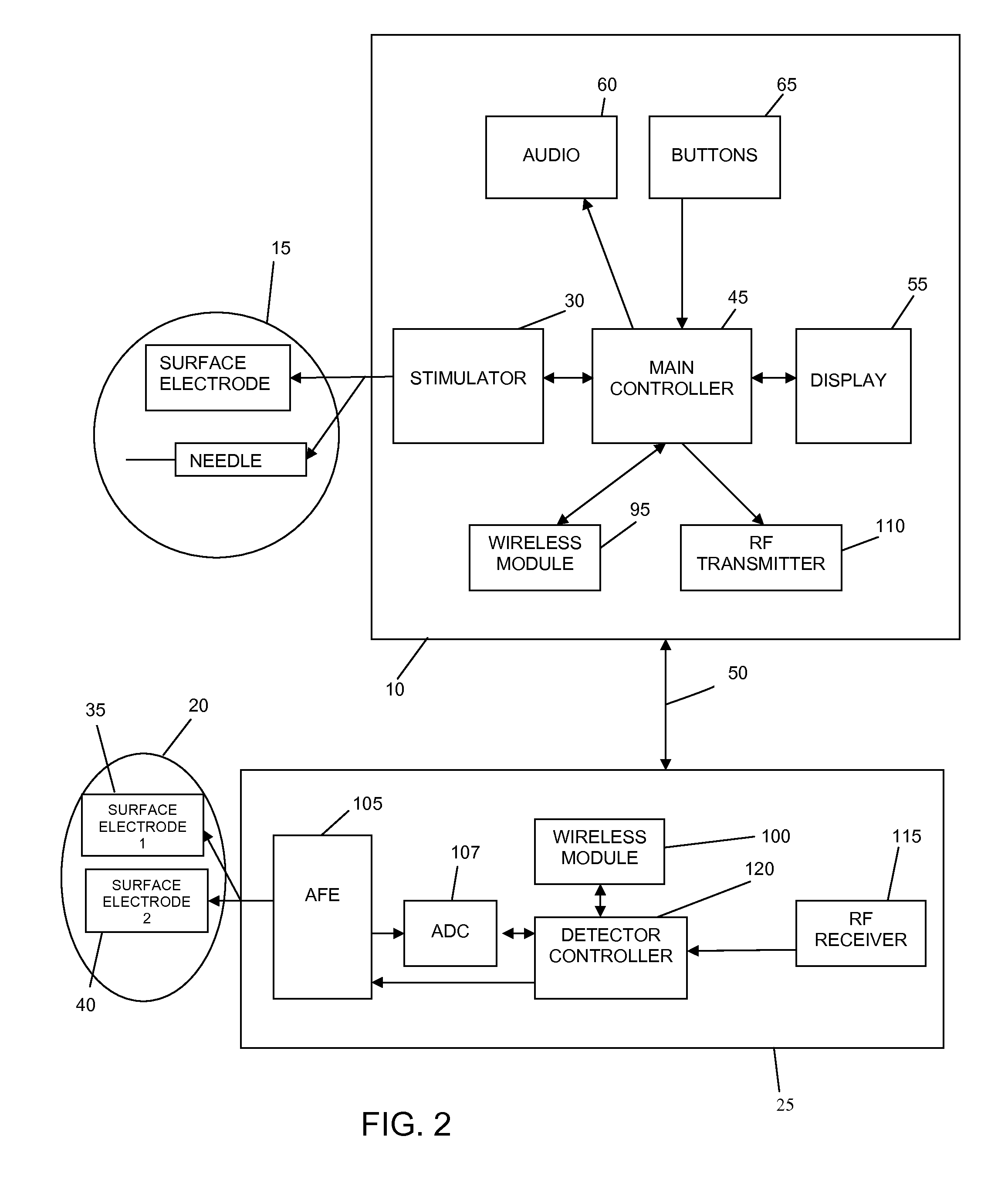Method and apparatus for quantitative nerve localization
a nerve localization and quantitative technology, applied in the field of quantitative nerve localization, can solve the problems of general lack of precision and consistency with the current clinical approach, and the utility of a conventional nerve stimulator can be highly compromised, and the effect of reducing the accuracy of the current clinical approach
- Summary
- Abstract
- Description
- Claims
- Application Information
AI Technical Summary
Problems solved by technology
Method used
Image
Examples
Embodiment Construction
Quantitative and Objective Measurement of the Evoked Nerve Response in a Nerve Localization Procedure
[0077]Looking first at FIG. 1, there is shown a needle localization system 5 for electrically stimulating a nerve of a patient (also sometimes referred to herein as the test subject) using a needle and a surface electrode, detecting the nerve response, and localizing the needle to the nerve based upon the characteristics of the detected nerve responses. In accordance with the present invention, the nerve responses detected by monitoring the muscle innervated by the nerve (in the case of a motor nerve) or by monitoring another portion of the nerve (in the case of a sensory nerve) so as to provide a nerve response trace, and then detecting variations in the nerve response trace which are indicative of nerve response (e.g., variations in the amplitude of the trace).
[0078]More particularly, needle localization system 5 generally comprises a main unit 10 for stimulating a nerve through st...
PUM
 Login to View More
Login to View More Abstract
Description
Claims
Application Information
 Login to View More
Login to View More - R&D
- Intellectual Property
- Life Sciences
- Materials
- Tech Scout
- Unparalleled Data Quality
- Higher Quality Content
- 60% Fewer Hallucinations
Browse by: Latest US Patents, China's latest patents, Technical Efficacy Thesaurus, Application Domain, Technology Topic, Popular Technical Reports.
© 2025 PatSnap. All rights reserved.Legal|Privacy policy|Modern Slavery Act Transparency Statement|Sitemap|About US| Contact US: help@patsnap.com



